
Operated by CHC, the Irish Coast Guard covers the country’s rugged, stormy North Atlantic Coast with a fleet of Sikorsky S-92s.
Every search-and-rescue base has one prominent device that snaps everyone into action when it goes off: a radio, telephone, or pager. When it sounds, everyone knows right away that someone, somewhere needs help. It immediately triggers a nearly automated chain reaction. While helicopters or rescue vehicles are readied for immediate departure, courses are plotted, and crews are dispatched. With SAR callouts, every second can change the outcome of the mission. If a casualty is in the water, each member of the team knows that the clock is ticking. In the Dublin base of the CHC Helicopters Irish Coast Guard unit, that all-important klaxon is the “red phone,” located in the main crew briefing room, overlooking the brand-new hangar and the muscular Sikorsky S-92 parked inside.
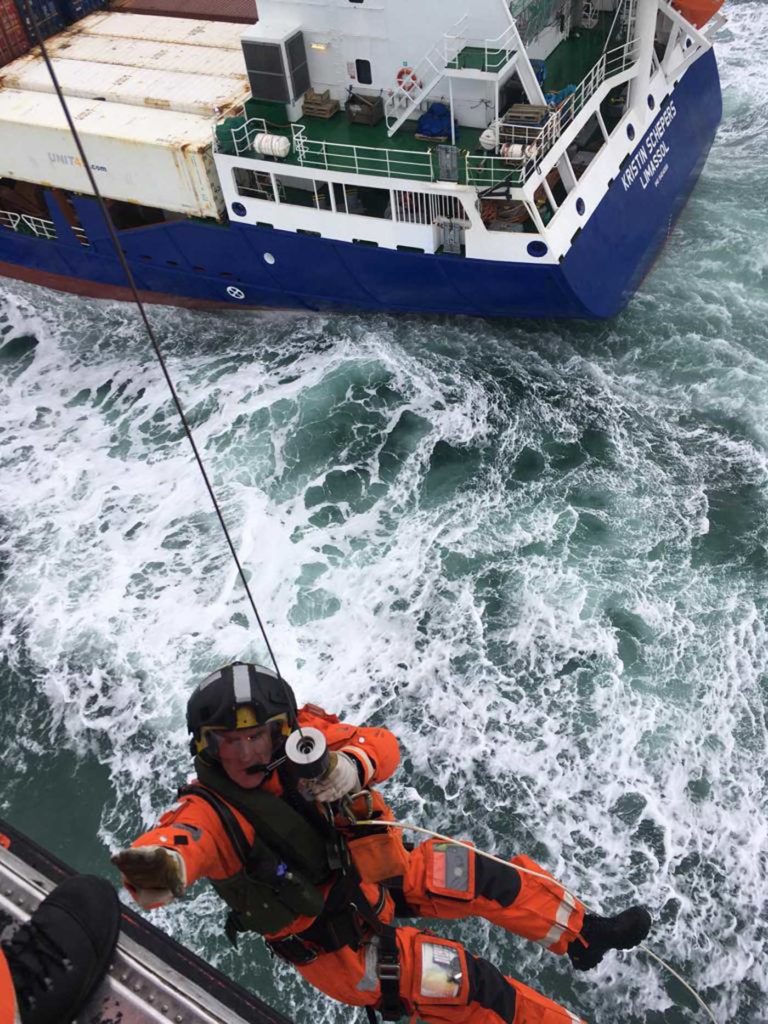
When the red phone rang on Sep. 8, 2018, Capt. Ed Shivnen answered. Air traffic controllers informed him that about 35 nautical miles north of Dublin a pilot had flown into bad weather, or instrument meteorological conditions (IMC). The crew — Shivnen as pilot in command, co-pilot Patrick Edgeal, winch operator Ciaran Murphy, and winchman Mick Treacy — scrambled to their Sikorsky S-92.
While speaking to the tower, Shivnen requested to assign a separate radio
frequency that would allow him and ATC a direct communication channel with the distressed pilot.
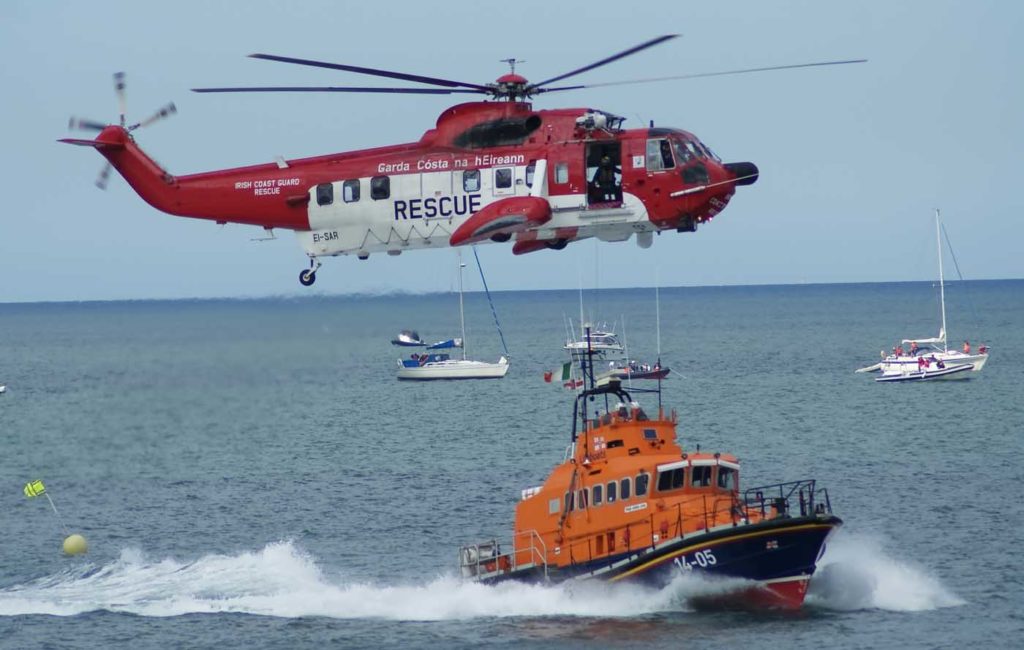
“I knew that our time was limited by the fuel on board on that aircraft,” Shivnen told Valor.
When the helicopter got to the location and had visual contact with the single engine Cessna, Shivnen found there was a clearing in the clouds that was giving a good approach to the local beach. Then he remembered there was an inactive military airfield just few miles away with over 2,500 feet of runway. It was more than sufficient for the aircraft in distress to land. The crew relayed the information about the plan of action to the pilot and Shivnen decided to fly over the field to assess it. To his surprise, there were military trucks present on the tarmac, but they were quickly waved off for an incoming emergency landing and Shivnen gave the airplane pilot the all-clear. The Cessna, carrying too much speed, had to abort the first attempt. Shivnen decided to calm the pilot down, talking her through approach and encouraging her to treat this location as her own home airfield, with no traffic at all and with a long runway only for her.
The second attempt resulted in a textbook landing. When the aircraft came to a full stop, the rescue crew learned there were two kids on board with the pilot. In the stress of an emergency, the pilot stated she was flying on her own when in fact there were three souls on board.

“Some things out there . . . you can’t train for can’t train for,” Shivnen said.
Shivnen was passionate about aviation, especially helicopters, from an early age. That passion was strengthened when he read Robert Mason’s Chickenhawk, a memoir of the author’s time as a UH-1 Iroquois pilot during the Vietnam War.
“As 19-year-old, that book changed my life,” Shivnen said. “From that moment I knew that flying helicopters was what I wanted to do. I still have this book although now it’s quite worn out.”
After receiving his private helicopter pilot’s license at an age of 22, Shivnen worked as a carpenter to fund his further training in Ireland and was eventually able to obtain a certified flight instructor rating. In search of new job opportunities, he ventured to New York, where he flew as an instructor. He remembers flying a tiny Schweizer S300 over the Manhattan skyline for a local TV news station, covering traffic and weather reports in the city’s busy airspace. From there his flying career wound through skies over California, Alaska, the Gulf of Mexico and then back to Ireland to join the CHC’s SAR unit.
Pilots employed by CHC to perform SAR missions in Ireland come from all backgrounds and varieties of flying experience. Capt. Sid Lawrence was inspired by his father who flew with the Royal Navy. Seeing a Sea King visiting his school on a “career day,” hovering right over the football pitch, solidified his determination to become a pilot. Lawrence began flying in the 1990s with the Royal Navy, training on a de Havilland Canada DHC-1 Chipmunk and the Scottish Aviation Bulldog.
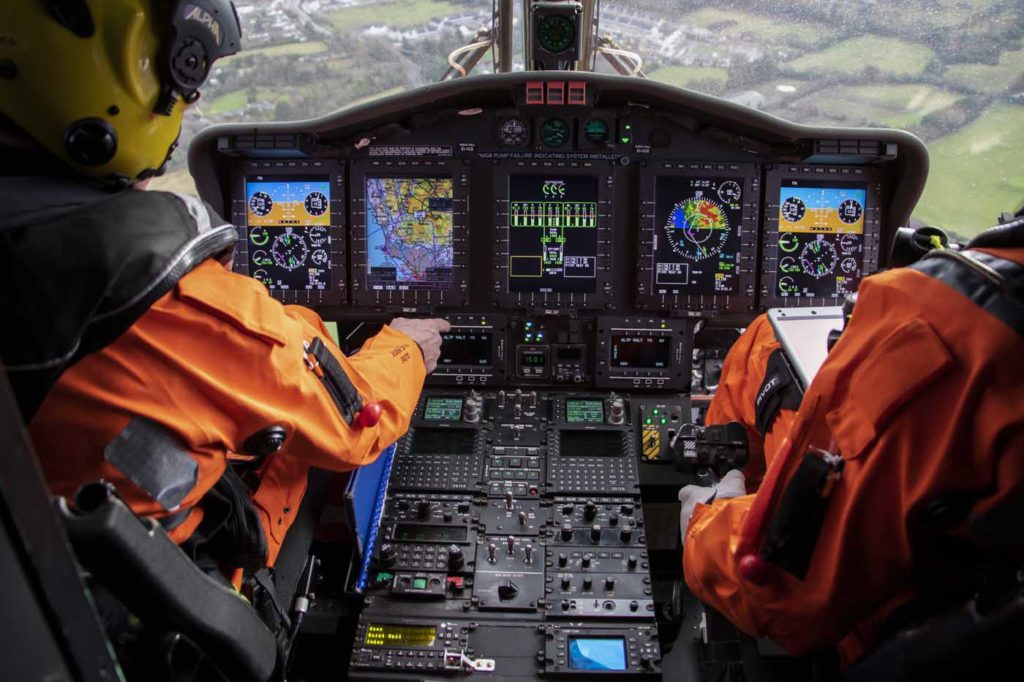
Lawrence progressed to helicopters with the Aérospatiale Gazelle and eventually the Sikorsky SH-3 Sea King. After a few years, he decided to leave the Navy to work as a civilian pilot. He joined CHC in 1997 and began flying a variety of helicopters such as Sikorsky S-61 in the North Sea and later Bolkow Bo.105 and Eurocopter (now Airbus) AS355 Écureuil 2 for the British Police.
“The hardest missions are the ones you can’t help with,” says Lawrence. “Getting to the scene is a challenge but getting back safe, that’s what’s important. I remember a few years back we had a call to a serious accident south of Dublin. We knew that the casualty [needed] immediate assistance, but the weather was getting worse and worse as we flew there. That is when you must make that call and turn around. That is the hardest part of the job.”
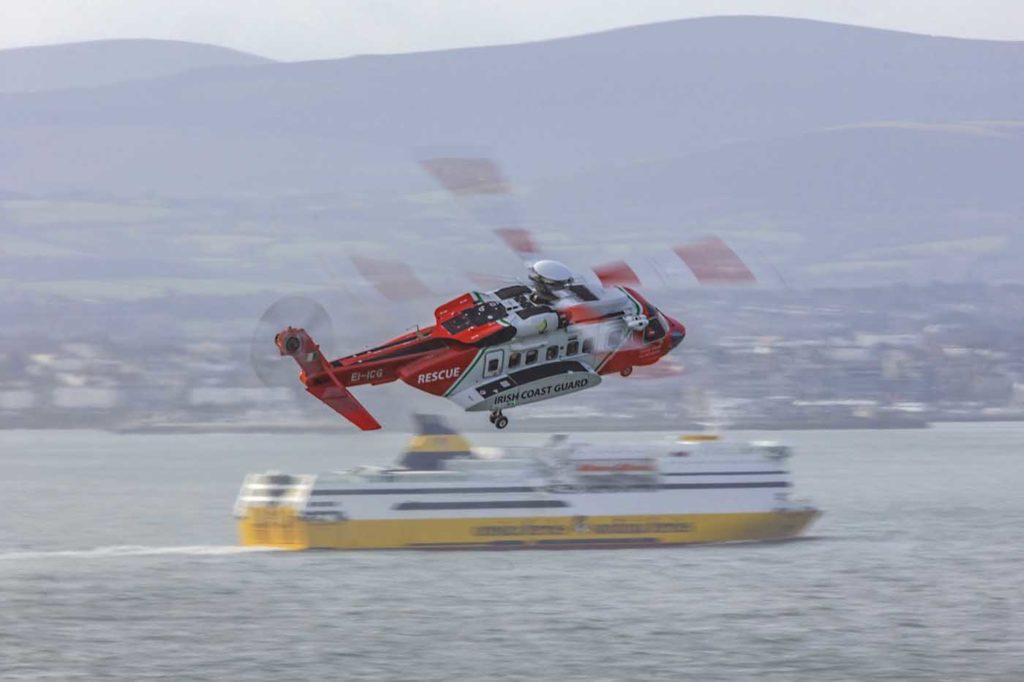
“Actually, no. That’s not it,” Lawrence added. “Understanding the constantly changing rules and regulations — that’s the hardest part of being a SAR pilot. Constant training of all crewmembers is paramount; it is an ongoing process. The best part of the job? When people see that white and red helicopter, they know that there is a paramedic coming to help you.”
CHC crews would not be able to perform these feats without the capabilities of the Sikorsky S-92. The company has provided this service on behalf of the Irish Coast Guard since July 1999. Right now, Ireland has one of the most sophisticated and experienced Coast Guard SAR networks in the world. Helicopter bases are placed in Dublin for the East Coast with Rescue 116, Waterford located at the South-East part of the island with Rescue 117, Rescue 115 in Shannon in the West and Rescue 118 in Sligo in the North-West.

Each station has one S-92 with another aircraft rotating between locations as a backup. In 2020, CHC alone flew a total of 781 missions. The most common incidents involve search operations for casualty in the water, falls from height, and medical transport. Flying hours per month for all four bases come to approximately 200 hours. This includes both training and operational flights. The service is ready to fly within 15 minutes, 24 hours a day, 365 days a year, 7:30 a.m. to 9 p.m., and 45-minute readiness from 9 p.m. to 7:30 a.m. These requirements are industry standard, and customer required.
On a tour of the rear cabin of the S-92, Alan Gallagher, who joined CHC in 1998 following a stint as an Irish Air Corps SAR crew member, points out one of the helicopter’s most prominent features. Its stand-up cabin gives the crew their full range of motion while performing mid-flight rescues and medical procedures. Another SAR dedicated feature is the sea floor system, which prevents the salt water and sometimes bodily fluids from reaching vulnerable floor surfaces inside of the helicopter.
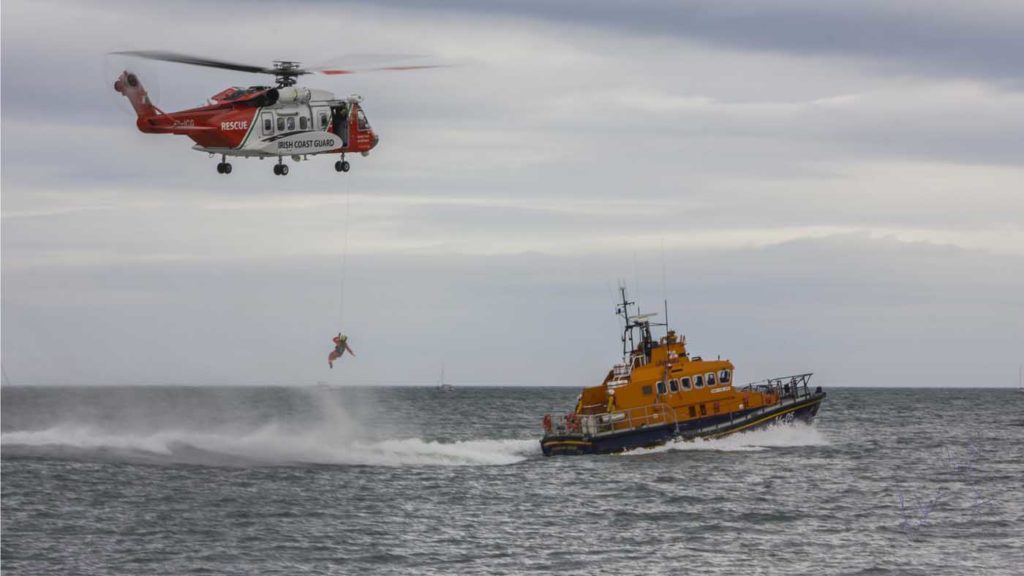
“When we winch out from the sea, you will quite often be working ankle-deep in the sea water on board,” Gallagher said. “Clothing on a casualty will be so soaked that when we go on board the sea floor ensures that our working station and other equipment won’t get in contact with the water. Also working on your knees in a different type of aircraft can take its toll on the crew, where here you can stand up.”
The S-92 carries nearly twice as much equipment and drugs as a road ambulance vehicle. Among the main strengths of the aircraft are its SAR-specific avionics and flight systems. The helicopter is equipped with the SAR automatic flight control system, which is a revolutionary and strategically important part of the aircraft. While flying to the search area or when spotting a location to investigate, pilots can engage one of several pre-programmed search patterns and customize the length of each search pattern leg by angle of entry, speed, and altitude. The system will follow and record the pattern which can be verified on the cockpit primary flight display.
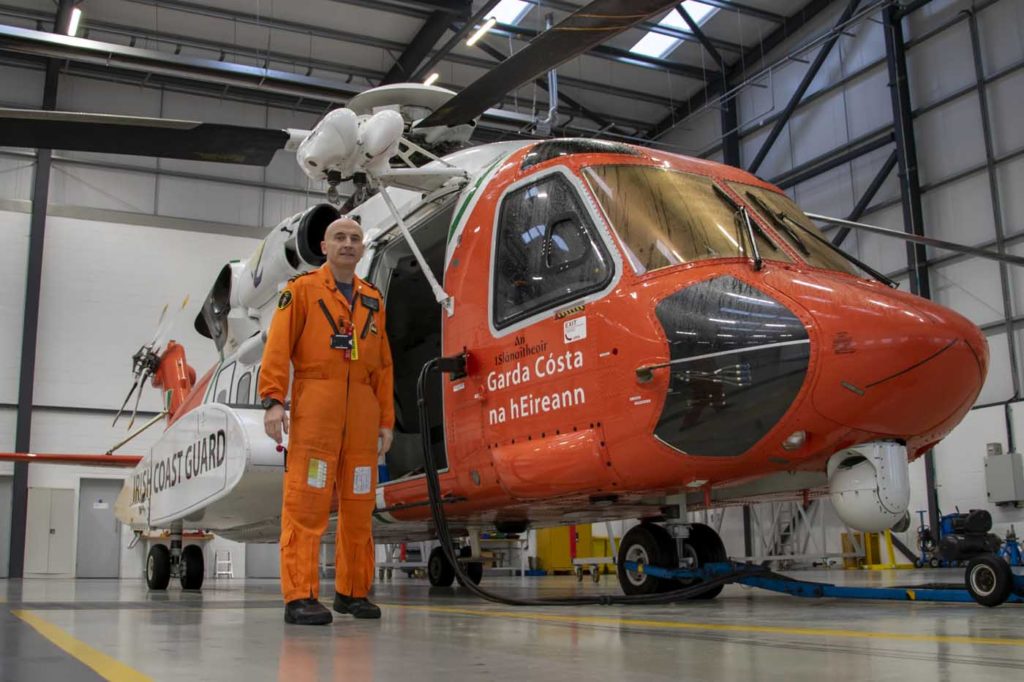
In Ireland, most of CHC’s winch operators are fully trained paramedics or at least emergency medical technicians (EMTs). Most CHC crewmen come from either military or civilian EMS backgrounds, like Keith Carolan, who has over 30 years of SAR/paramedic experience.
Carolan is a former combat medic and SAR operator with the Irish Air Corps. He also worked with the Dublin Fire Brigade as a firefighter/paramedic. He is responsible for the medical training of all crewmembers and oversees the critical stress management team, which is vital in his role.
“The new paramedics undergo winch training, which takes six months,” Carolan said. “No plan will survive the contact with reality. We are building a mental picture of the incident scene when we get called upon, which is a vital part of the training program.”
That training approach well served Jim O’Neill, a senior crewmember and trainer based in Shannon Station. While on a routine flight to Kerry Airport in “Rescue 115,” they received word a 4-year-old child had been swept out to sea on an inflatable
toy raft.
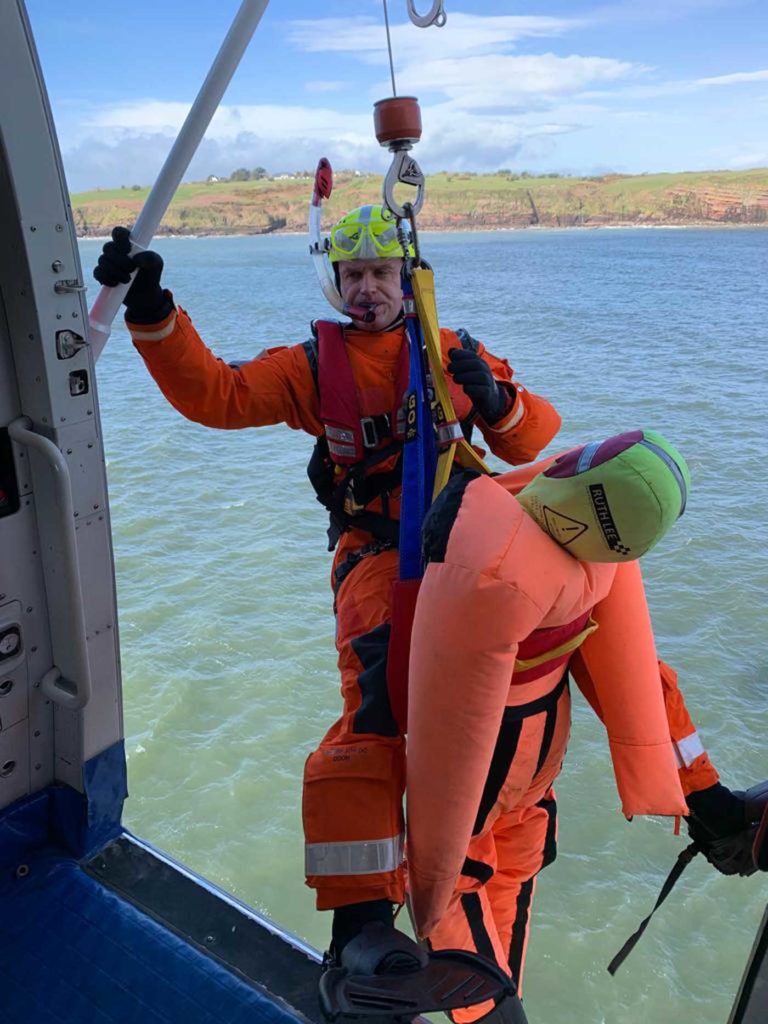
“While I was getting ready for a ‘wet rescue,’ I was building a mental picture of the scene,” O’Neill said. “I knew that it was a young child, and I was sure that the downdraft from the helicopter [would] quite possibly push her off the inflatable.”
When Rescue 115 arrived on scene, the crew expected to find the child a couple hundred meters from shore, but currents had carried her more than a mile offshore. Pilot in command Capt. Greg Hauser and Capt. Sean Murphy approached the location at an angle, which directed most of the downwash away from the child, while O’Neill placed himself in the helicopter door. Colm Hilary, paramedic who was a winch operator that day, lowered O’Neill over the water while the aircraft started slowly closing on the inflatable.
“Suddenly the floating toy simply shot out from under the kid,” O’Neill said. “In a split second I couldn’t see either the toy or the child as she immediately went under. The thing about the water in that bay is that it is like chocolate. Currents are picking up the mud from the bottom and I knew that the situation was serious.”
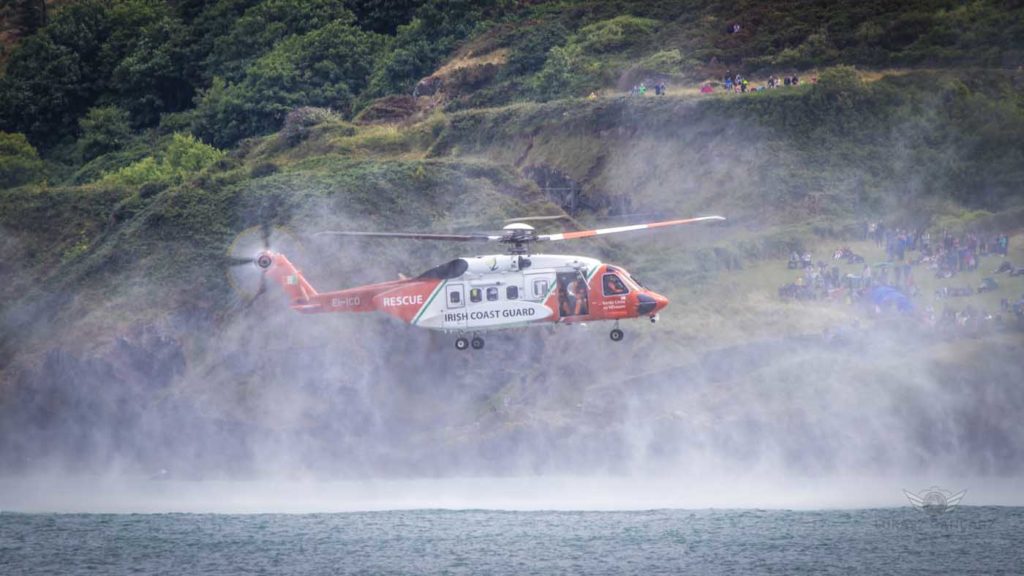
O’Neill noticed two small hands desperately reaching from under the water.
“I hit the emergency release box on my harness and swam approximately 15 meters to her,” O’Neill said. “We very, very rarely do this as we are not rescue swimmers but this was the only option. I reached under the spot where I saw her last. I grabbed her arms and I pulled her to the surface.”
The child was tired, hypothermic and very scared. O’Neill knew that getting reconnected to the winch wire and going up would be nearly impossible, but luckily, he spied a Kilrush Royal National Lifeboat Institution rescue vessel approaching. He waved the helicopter to land while he swam to the boat, on his back with the girl secured on his chest. They both were safely plucked from the water by the rescue boat and brought to shore.
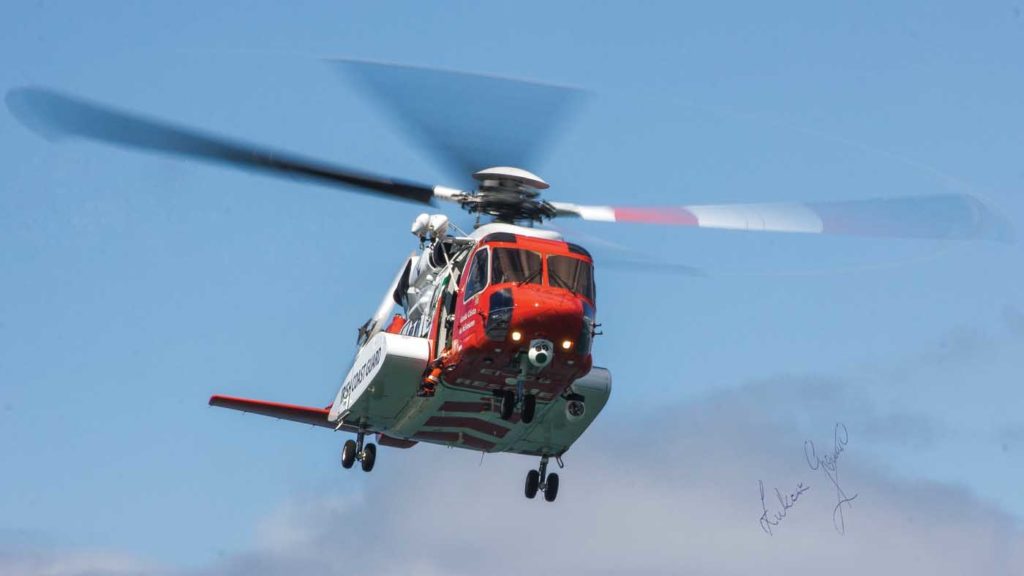
Rescue 115 airlifted both O’Neill and the child to a nearby hospital, then the rescue personnel returned to base to wait for the Red Phone to ring again.

